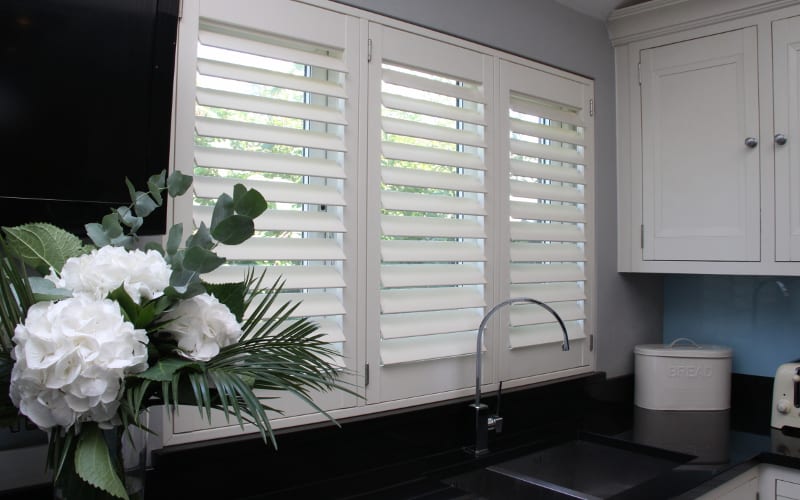Given their importance, those looking to bring shutters into their own space need to decide what they want the louvers to look like and how they want them to work before making a purchase. This process involves considering factors such as the colour, size, and purpose of the louvers, and choosing the louvers that are going to work best for your needs. As you read this article, think about what those needs are and hopefully you can bring your ideas to a professional – then it’s time to sit back and watch your dream shutters come to life!
The size of your louvers will influence not only on their appearance, but there functionality too. Whether they are thick or thin determines the level of light, privacy, ventilation, and insulation that your space enjoys. Likewise, larger louvers ensure a less restricted view when opened, whereas smaller ones may obstruct your eye-line when looking outside (for better or for worse). Please note that when we refer to the ‘size’ of your louvers, we are talking about their width; their length will vary depending on the measurements of the frame and shutter panel.
Let’s now take a look at the different size of louvers on offer and the unique qualities of each. Just remember, there are no hard and fast rules as to which you should choose as it always comes down to a combination of personal taste and practical needs.
This is often the smallest available width for your louvers. Since these louvers are so narrow, your shutter will require more of them in order to fill the frame. As such, with louvers of this size, expect maximum levels of privacy and restricted levels of light – great for street-facing windows, bathroom windows, and windows that receive too much sunlight light at certain times of the day.
These louvers are popular due to their flexibility. They still give you some privacy when opened, but they let in far more light than the smallest available louvers. Not too big, not too small, 63mm louvers tend to be compatible with shutters of any size and shape in terms of aesthetics – that’s what makes them a go-to choice for many of our customers!
If you’re looking for a middle-ground between standard louvers and more adventurous louvers, 76mm louvers may be your safest bet. Simply put, they have all the benefits of 63mm louvers, only with a subtle aesthetic difference. Perhaps your window just calls for slightly wider louvers, or perhaps you’d prefer wider gaps so that you can appreciate a well-kept garden.
Louvers of this size are decidedly bigger than average. They allow more light into your space, while still offering privacy (when slightly tilted). There is also a major difference in appearance, one that you cannot achieve with smaller louvers. They give your window more room to breathe: drawing the eye beyond the shutters, accentuating certain design features such as lead-lights, and perhaps opening up a picturesque view.
For most manufacturers and suppliers in the industry, 114mm is as wide as louvers come. Although these offer the least privacy when opened, they also bring in the most amount of light; indeed, tilting louvers of this size often has a similar effect to opening the shutter panel itself. Given these effects, 114mm louvers are often best suited to dark rooms, big and tall windows, and interiors with a sense of drama to the design.
Think about the size and shape of the shutters you want when choosing the right louvers. Smaller designs look best with fewer louvers as this prevents them from looking too cluttered, and the size of the louvers should be kept in proportion with the overall size of the shutter (simply ask your shutter specialists which size of louver would look best for your chosen frame). Indeed, anyone who favours a minimalist look should keep the number of louvers to a minimum, because fewer louvers means fewer lines, and too many lines are the death of the minimalist. Keep it clean and smooth by using larger louvers that make your shutters look far less busy.
With larger window styles – such as bay windows, floor to ceiling windows, and french doors – the end result often looks more appealing when the window shutters have wide louvers. Why? Because small louvers on large shutters can make the panel look cluttered and unmeasured, with simply too much going on. Moreover, they don’t seem practical for windows of this size, which are usually built to fill a space with light: small louvers would limit this great light source, reducing huge pools of light down to narrow strips.
If you’re sold on the idea of introducing some gorgeous new shutters into your home, feel free to get in touch with the friendly team at Diamond Shutters.



